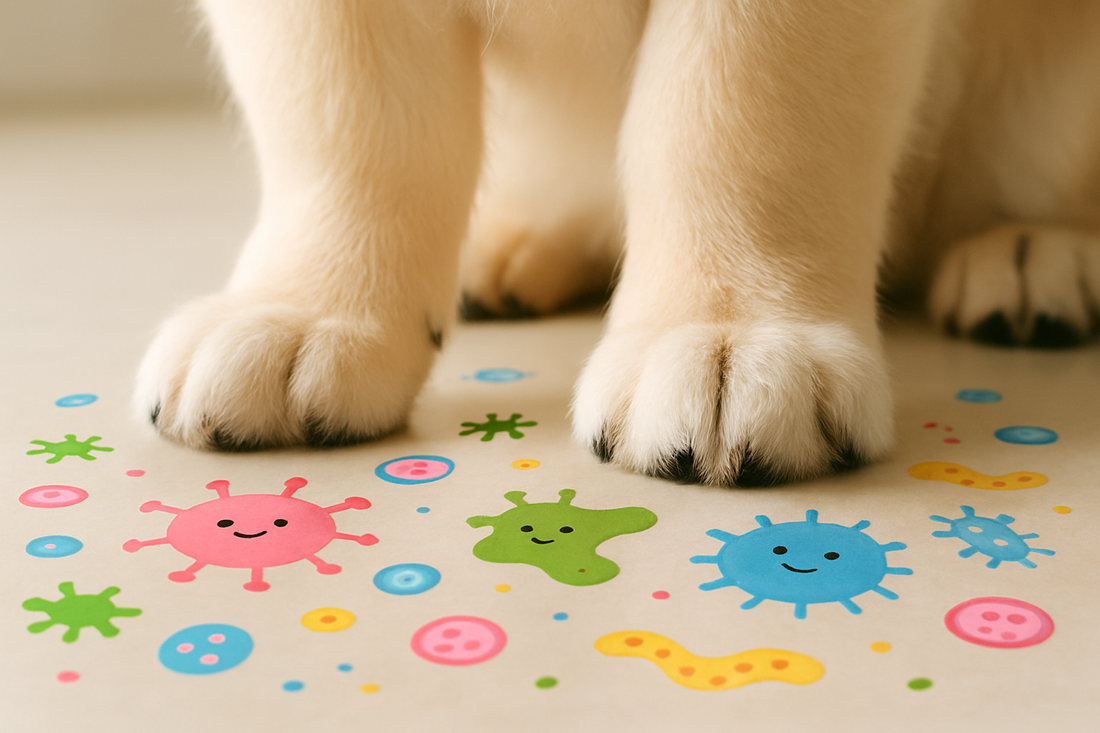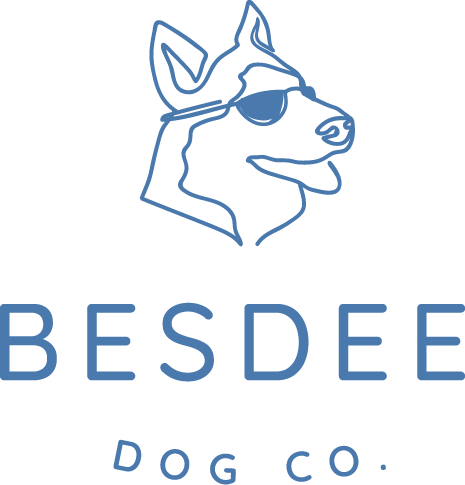
The Hidden Dirt on Dog Paws: Why Cleaning Them Matters More Than You Think
Share
Why Paws Deserve More Attention Than Just a Quick Wipe
Every time your dog walks through grass, dirt, pavement, or public areas, their paws pick up a lot more than just visible mud. They collect bacteria, allergens, chemicals, and other particles. These hitchhikers can be transferred to your floors, furniture, and hands.
As a nurse, I see firsthand how these kinds of small transfers of germs in hospitals lead to infections in vulnerable people. In healthcare settings, hand hygiene is considered the single most effective method to prevent the spread of germs. Hopkins Medicine+1
That’s powerful. And it makes me think of paws like little “dog hands.” They touch everything, and then they touch us, our kids, our floors, our beds. If we know human hand washing makes such a big difference, it makes sense that cleaning paws would too.
Real Numbers: Hand Washing & Infection Control
Here are some statistics that highlight just how powerful something as simple as washing hands can be:
- According to the World Health Organization (WHO), proper hand hygiene can prevent up to 50% of avoidable infections acquired during healthcare delivery. World Health Organization
- Interventions in Infection Prevention and Control (IPC) programs—including hand hygiene—can reduce healthcare-associated infections (HAIs) and antimicrobial resistance by 35-70%. World Health Organization
- The U.S. Centers for Disease Control and Prevention (CDC) reports hand washing with soap reduces diarrheal illness by 23-40% and respiratory infections by 16-21% in the general population. CDC
These numbers matter—both in hospitals and at home—because germs don’t distinguish between a patient room or your living room. Poor hygiene at any point increases risk.
What Research Says About Washing Dogs
While studies haven’t yet isolated “paw cleaning after every walk,” research on dog washing shows real benefits:
- Allergen reduction: One study found that washing dogs with shampoo reduced the major dog allergen, Can f 1, by ~84% in fur and ~86% in dander. Airborne allergen levels in homes dropped by 41–61% for up to a week after bathing (Hodson et al., 1999).
- Hospital dog hygiene: A 2025 study showed that washing therapy dogs in hospitals significantly reduced allergen levels (Can f 1 and Can f 4), making them safer for vulnerable patients (Wretman et al., 2025).
- General guidance: A 2024 review noted that washing dogs at least twice a week lowered airborne allergen concentrations by 40% or more (MDPI, 2024).
- Skin health: Bathing dogs with appropriate shampoos has also been shown to improve skin condition and reduce irritation in allergic dogs (Taguchi et al., 2024).
The takeaway? Washing reduces allergens and contaminants on dogs. Since paws are the main contact point with the ground—and a major way outdoor debris comes inside—regular paw cleaning is a practical extension of what the research shows.
Why Regular Paw Cleaning Helps (Especially from a Health Perspective)
Drawing from nursing and infection prevention principles, here’s how cleaning your dog’s paws helps on a micro scale:
- Breaks the chain of transmission. Just like clean hands prevent germs from spreading to patients, clean paws keep germs from moving inside the house and onto surfaces you and your family (or pets) touch.
- Reduces allergen load. Allergens from outside (pollen, mould, dust) cling to paws. Less allergen = fewer reactions for sensitive people.
- Supports skin health. Paw pads can develop irritations or yeast overgrowth if debris and moisture are trapped. Regular cleaning helps prevent that.
- Limits “full bath” frequency. If the paws are kept clean regularly, you may not need to bathe your dog as often—good for their coat, their skin, and your water usage.
Eco-Friendly Paw Cleaning Made Simple with Besdee
Healthcare settings rely on protocols, supplies, and consistent practice. At home, it's similar: the right tools + routine make huge difference. That’s why I designed the Besdee Paw Wash Kit to align with both health and environmental priorities:
- Refillable bottle + soft foam scrubber top, so you use less waste.
- Dissolvable tablets to mix into water for gentle, pH-balanced wash (transport, shipping, and storage efficiencies).
- Bamboo microfiber towels that are washable & reusable.
- Travel-friendly canvas bag, so you can maintain paw hygiene on the go.
In hospitals, we measure compliance (how often staff clean hands when they should) because even if a method works in theory, what matters is doing it reliably. At home, the same: having a tool that’s convenient means you’ll actually use it consistently.
How to Clean Your Dog’s Paws (Nurse-Approved Method + Besdee Paw Wash Kit)
- Pre-mix you cleaning solution so its ready when you need it. (1 Tablet + 1 cup water).
- Pump 1-2 times for foam. Use the foam scrubber or towel on paws, between pads, around nails. Massage gently to lift away dirt, allergens, and odor.
- Wipe with a dry towel. Make sure between toes and paw pads are dry (moisture can harbor yeast or bacteria).
- Bonus: If paws are very dirty, use a mild pet-safe cleanser, followed by the Besdee wash to finish clean.
Even wet soil or visible dirt can hide microorganisms. Much like when nurses scrub before patient care, thoroughness matters.
Final Thoughts
Because of my nursing background, I can’t help but see parallels: hand hygiene is simple, but if neglected, it’s often the weak link in preventing infections. The same holds for our dogs’ paws. You might think a quick wipe is enough—but investing a little effort (and the right tools) goes a long way for your pet’s health, your family’s health, and the cleanliness of your home.
👉 Ready to adopt a routine that protects pups and people? Shop the Besdee Paw Wash Kit now and make paw cleaning a healthy habit.
